Aborglyphs
I was told about the Aspen tree carving this past fall at the USFS Visitor Center when I was visiting the Bristlecone Pine Forest in the White Mountains. Intrigued, I started searching the canyons around the Mono Basin and was delighted to find some old carvings dating from 1929-1930’s. The older carvings are quite intricate and use the Basque language.
Upon making some research, I came across more of the history of these carvings. The Basque sheepherders came to America in the mid 1800’s and tended sheep in the Western Unites States- from the Eastern side of the Sierras, California, Nevada, Colorado, Idaho and Oregon. They often camped with their sheep in Aspen groves with a good water source nearby. Using a knife, nail or other sharp object they would carve into the smooth soft bark of an Aspen tree names, dates, images, messages, etc.
As the trees age, the cuts raise up and stand out more and more. Aspen trees live 80-100 years and as they age the bark begins to crack and fall off as the tree dies. Unfortunately, the older carvings are lost forever when the tree dies.
I made another trip to find and document more of the Arborglyphs, and once you know where to look, they are in most established stands of Aspens. There is one grove with several carvings of a particular woman named “Trini.” Apparently she was a working gal who visited lonely shepherds…
I hope you enjoy the Arborglyph photographs- I found them quite fascinating!


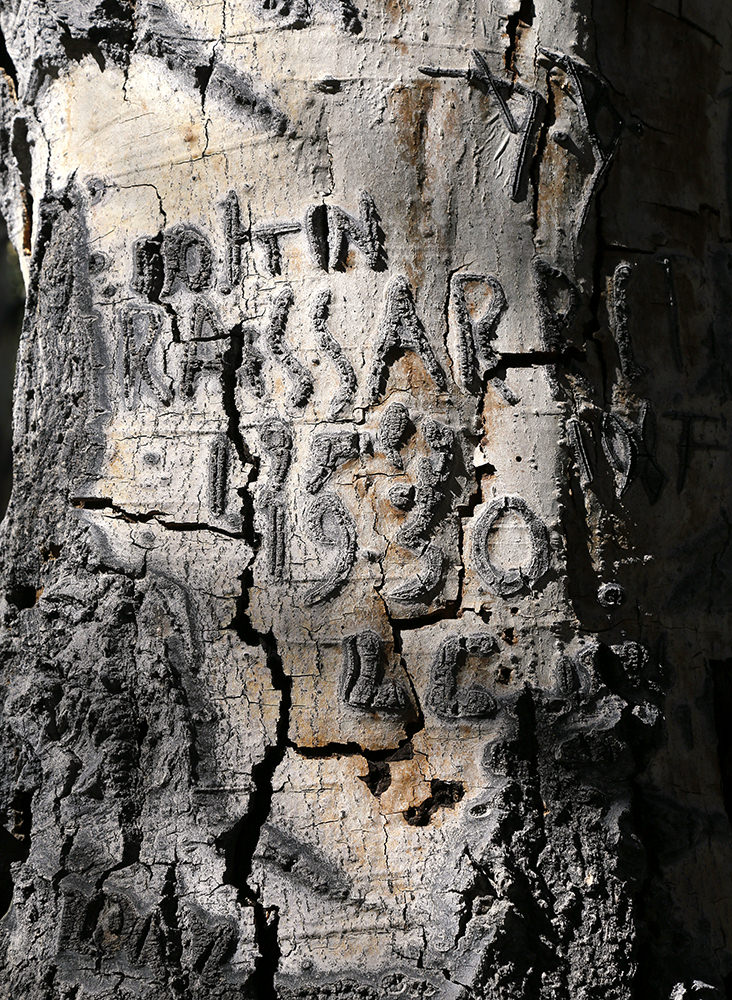

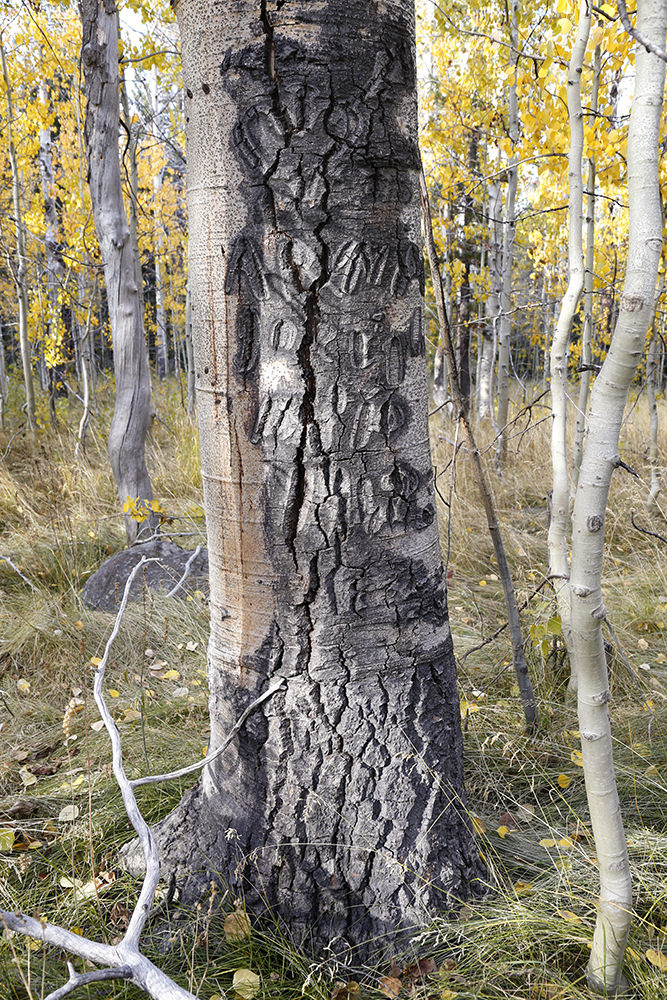






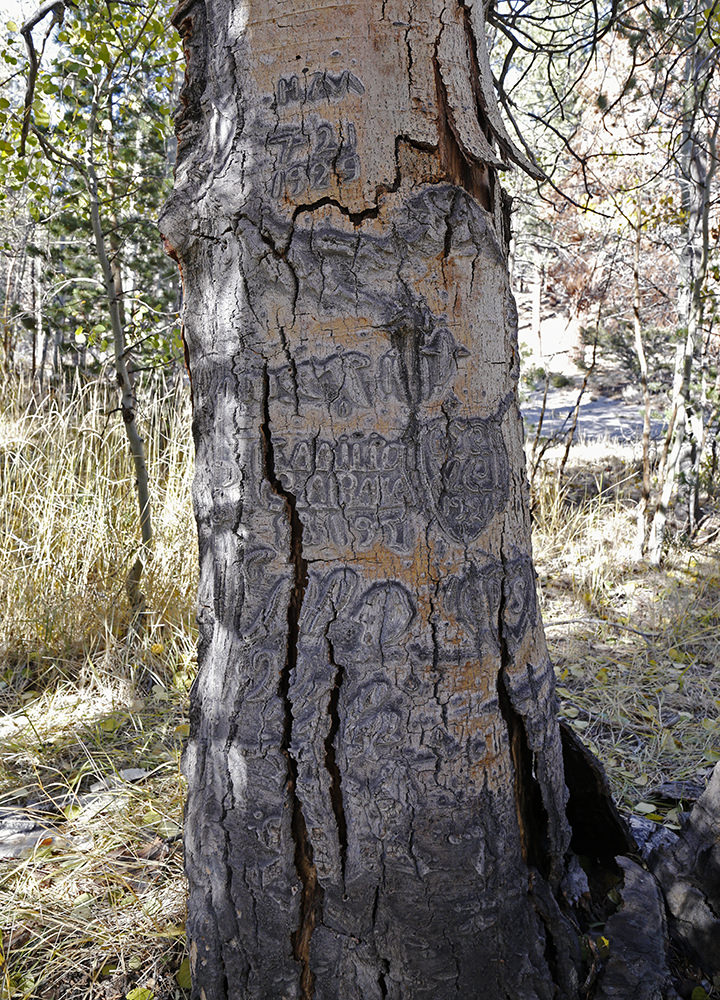







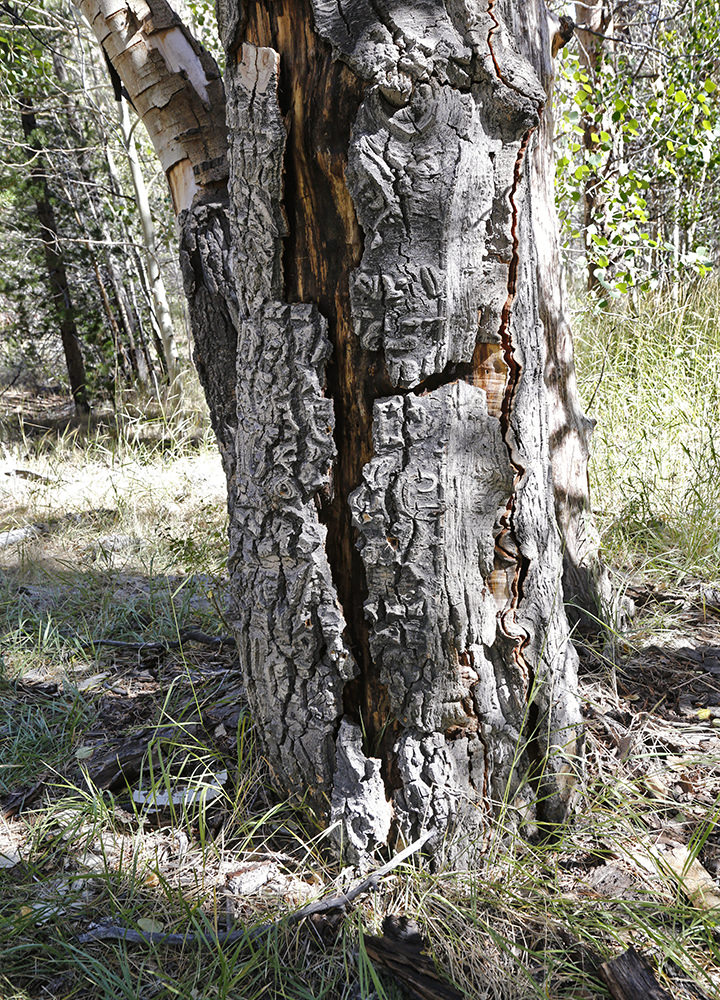














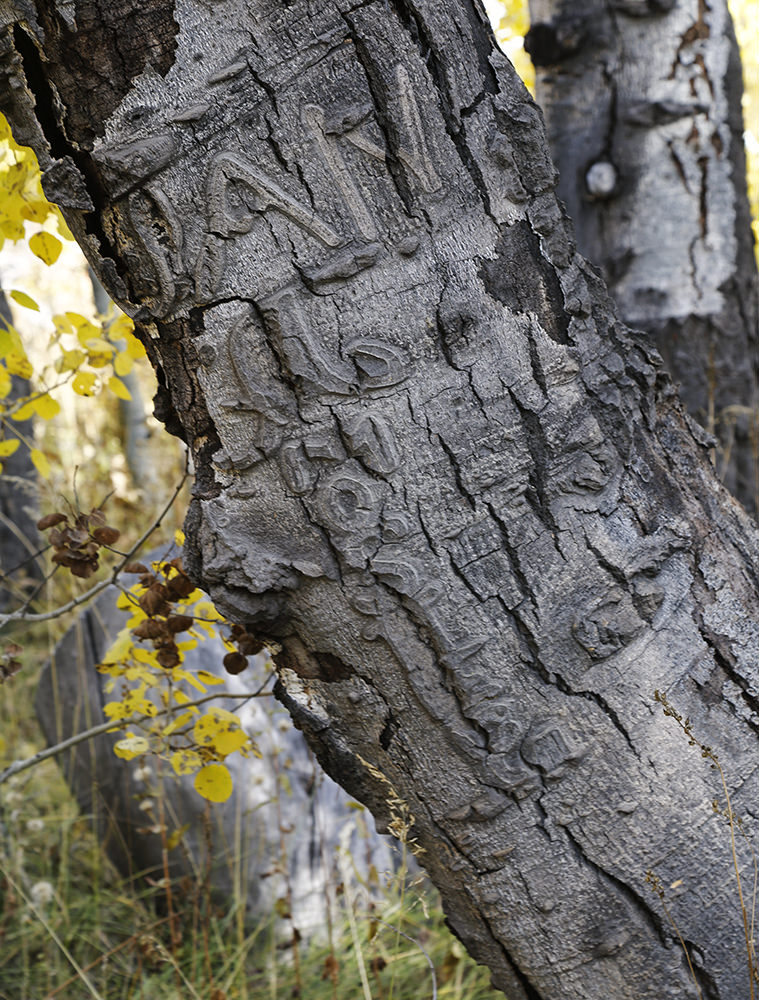









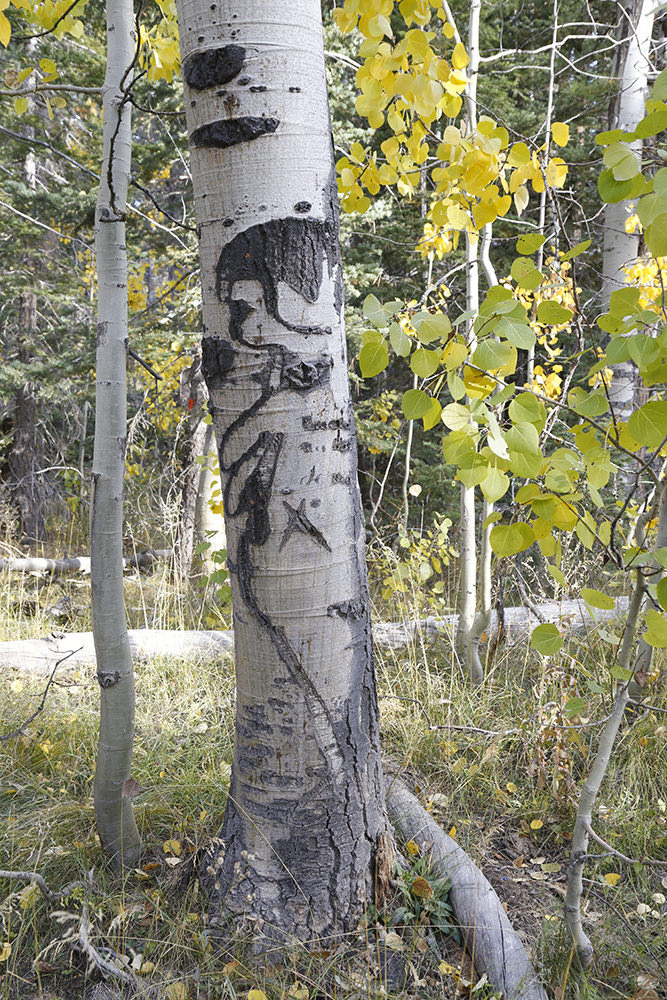
Comments are Disabled